 |
Home | Search | Browse | About IPO | Staff | Links |
 |
Home | Search | Browse | About IPO | Staff | Links |
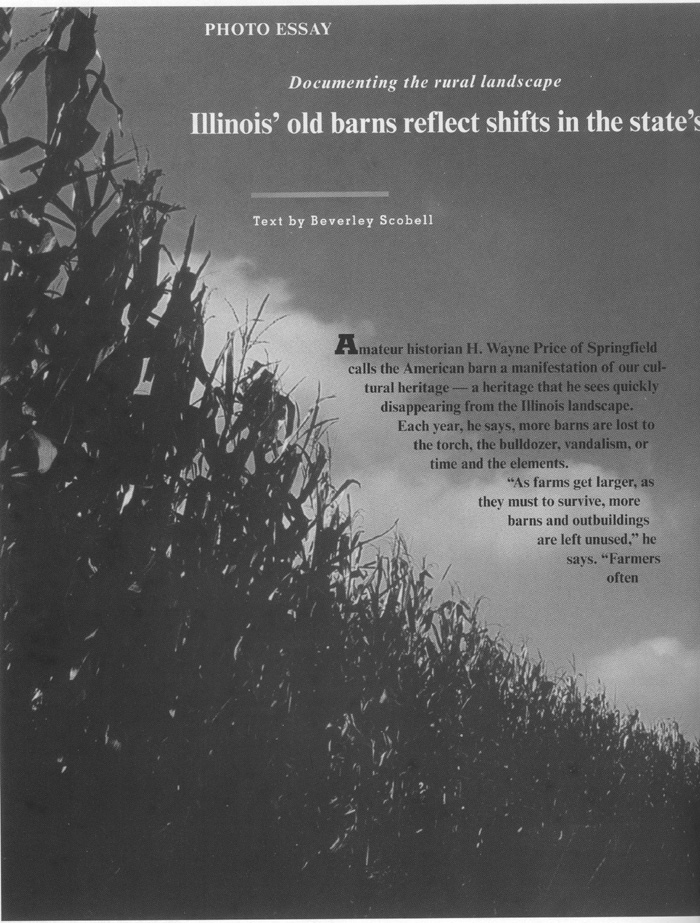
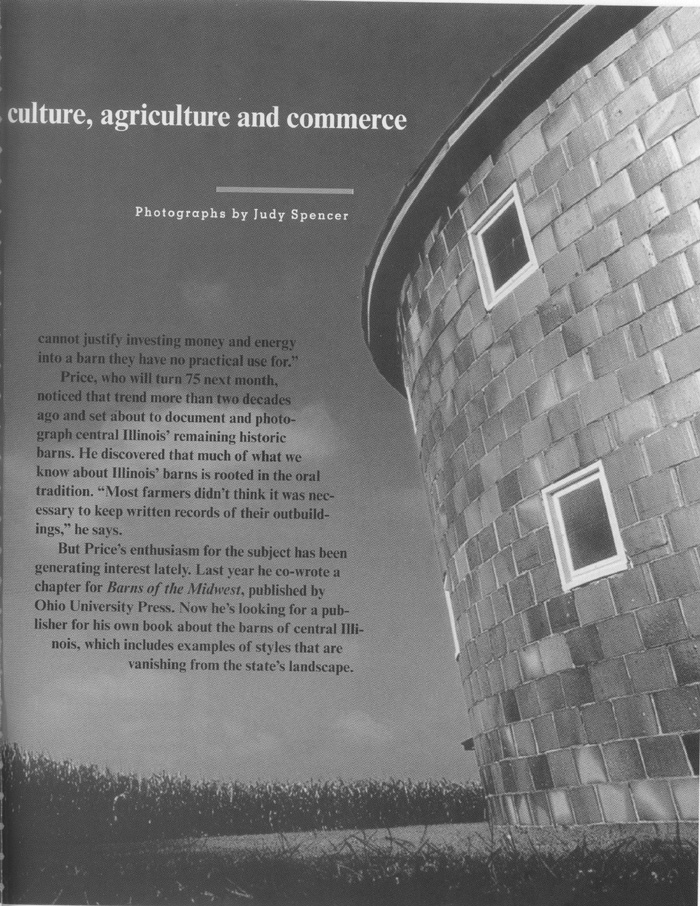
Illinois Issues December 1996 | 19
The round barn shown on the previous pages was built in 1914 in Green County. This one has a tile exterior. The University of Illinois is credited with the revival of the style, which enabled farmers to feed livestock more easily through a center silo. It is also believed to be more tornado resistant.
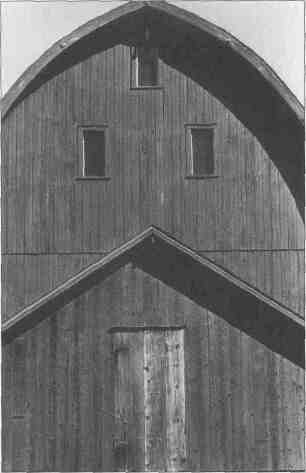
The barn shown above was built in the first quarter of this century. It may have been purchased from Sears, Roebuck & Co. Though the barn's history cannot he documented for certain, it was built in a style similar to that of the company's mail-order, pre-cut barns. |
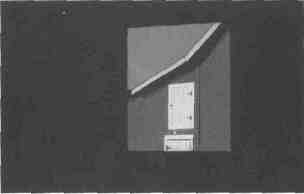
The barn shown directly above (and on our cover) was probably built before World War 1. A general purpose barn located in Green County, it was photographed through the window of a round barn. |
Last fall, he inspired photo journalist Judy Spencer to tag along for a tour of some of those barns. Her photographs appear on these pages.
Many of the barns Price has documented reflect ethnic and popular culture. Until the mid-19th century most Illinois barns were the product of folk culture. Later, farmers had access to pattern books distributed by agricultural experiment stations at land grant colleges like the University of Illinois, farm equipment manufacturers and catalog companies. "By the end of the first quarter of this century, there were few, if any, new barns being built in the traditional ways," says Price.
He identifies five major barn designs from folk culture.
Log barns reflect the mid-Atlantic culture that came west with the pioneers. Several examples of these single-crib and double-crib barns still can be found along the Mississippi River in central Illinois' Calhoun County.
The Dutch-style barns, designs used by emigrants from the Hudson River valley in New York, have a more complex architecture. With a high roof ridge, low eaves and greater width than length, their distinctive silhouette is easily identifiable on the prairie. This type of barn can be found throughout Illinois, but it is concentrated in the western, north central and east central sections of the state.
English barns are the
20 / December 1996 Illinois Issues
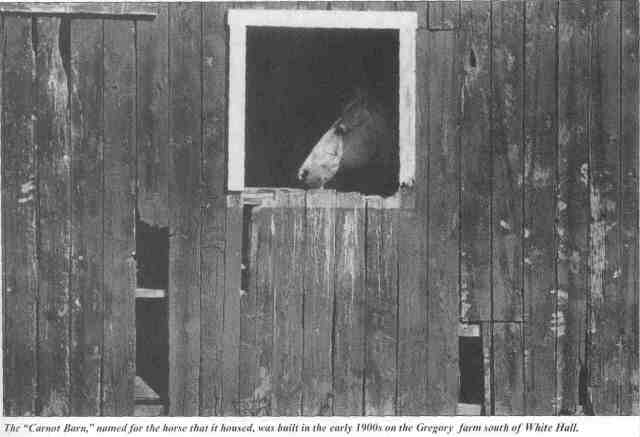
most common in the state. One type, the three-bay barn, is a one-level structure. The center bay is often a passageway running from one end to the other. The side bays are used to store hay or unthreshed grain or to shelter animals. A common variation is the raised-basement, three-bay barn.
The New England barn has the doors on the gable-end and an extended drive-through passageway. Such a structure allows for expansion at the end of the barn and is adaptable to larger farming operations.
The Pennsylvania German forebay barn was introduced to America by immigrants from south-central Europe, A typical example is a large barn on a masonry foundation, often built in the side of a hill. The structure allows farmers to drive vehicles into the second-level haymow. The second story, known as a "forebay" or "overshoot," projects four to six feet over the lower-level entrance and is designed to protect livestock from the weather.
Several examples of that style of barn can be found in northern and central Illinois. They are concentrated in Stephenson County, but there are some interesting variations in Adams County.
Just before the Civil War, farm periodicals, notably The Prairie Farmer, began publishing advice on barn building. And state universities began to spread new ideas about barn designs.
The revival of the round barn is credited to the University of Illinois, which built several on its campus in Urbana-Champaign and published a bulletin in 1910 describing how to build them. The style reached the height of its popularity in the decade preceding World War I. Three examples still can be seen on the U of I campus. Others are scattered throughout the state.
Variations on the round barn are the "doughnut" and "oval" barns, with floor plans reflecting their names. Illinois also has examples of octagonal and polygonal barns, some of which have 10, 12 or even 20 sides.
Around the turn of the century, companies began marketing barn designs. Manufacturers of farm supplies, including the Hunt, Helm, Ferris & Co. of Harvard (better known as "Star Line") distributed their own hardcover catalogs that offered free blueprints.
But perhaps the ultimate example of the shift from folk to popular, or commercial, culture is the mail-order barn. Two Illinois-based companies, Sears, Roebuck & Co. and Montgomery Ward Co., as well as other smaller companies, offered ready-cut barns complete with the necessary lumber, hardware, nails, roofing and paint. Price cites one example of a mail-order barn that was erected in 1929 north of Lincoln in Logan County. It cost $900, including everything but the masonry foundation.
| Sam S. Manivong, Illinois Periodicals Online Coordinator
Illinois Periodicals Online (IPO) is a digitial imaging project at the Northern Illinois University Libraries funded by the Illinois State Library |